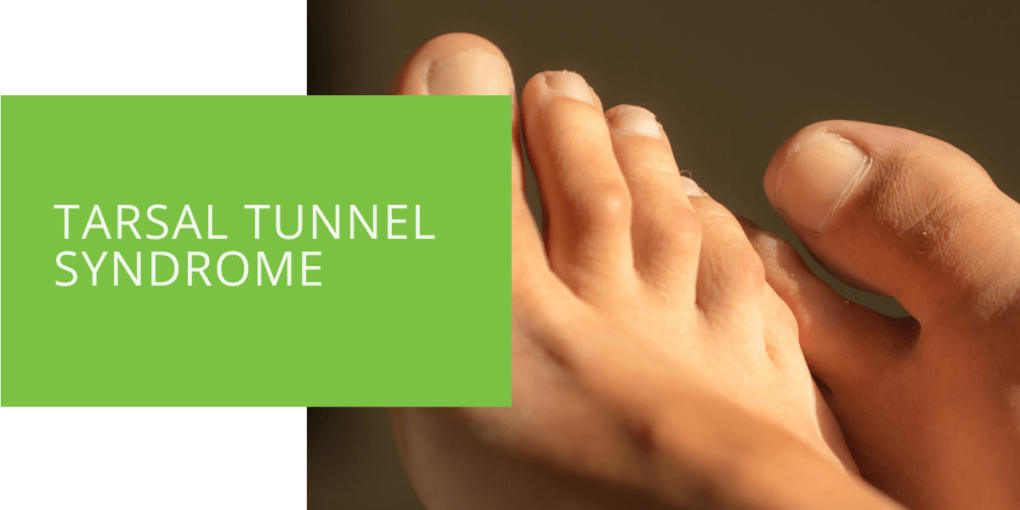Tarsal Tunnel Syndrome: Symptoms, Causes & Treatment
Tarsal Tunnel Syndrome (TTS) is a common nerve condition that affects the foot and ankle, caused by compression of the posterior tibial nerve as it passes through the tarsal tunnel, a narrow space on the inside of the ankle. This can lead to symptoms such as tingling, numbness, and pain in the foot and ankle. If left untreated, TTS can result in serious nerve damage and significantly impact your quality of life. It's important to understand the symptoms, causes, and available treatment options for this condition to help reduce compression on the nerve and improve your condition.
What is Tarsal Tunnel Syndrome?
Tarsal Tunnel Syndrome (TTS) is a condition that occurs when the posterior tibial nerve, which runs from the inside of the ankle to the foot, becomes compressed. This can result in pain, tingling, numbness in the foot, weakness, and difficulty moving the foot. The symptoms of TTS can range from mild to severe, and in some cases, the condition may be accompanied by other conditions such as flat feet or a bone spur.
Symptoms of Tarsal Tunnel Syndrome
Some of the most common symptoms of TTS include:
- Tingling, burning, or numbness in the foot, especially on the inside of the ankle or the arch of the foot.
- Pain, which can be severe, in the foot and ankle, especially when standing or walking.
- Weakness or difficulty moving the foot.
- A feeling of pins and needles in the foot.
The severity of symptoms can vary from person to person and depending on the condition's cause. However, if you're experiencing any of these symptoms, seeing a podiatrist is important, as TTS can be mistaken for other conditions such as ankle sprain.

Anatomy of the Tarsal Tunnel
The tarsal tunnel is a narrow space on the inside of the ankle that is formed by the ankle bone (the talus) and the heel bone (the calcaneus). The tibial nerve, along with several tendons and ligaments, passes through the tarsal tunnel on its way to the foot. The tibial nerve divides into several smaller branches, which provide sensation to the inside of the foot and ankle, as well as the arch of the foot.
Common Causes of Tarsal Tunnel Syndrome
TTS can be caused by several factors that lead to compression of the posterior tibial nerve. Some of the most common causes of TTS include:
- An ankle sprain
- Flat feet or other foot and ankle conditions cause the arch of the foot to collapse, leading to increased pressure on the nerve.
- A bone spur or other bony growth can cause compression on the nerve.
- Inflammation or injury to the tendons or ligaments that pass through the tarsal tunnel.
- Obesity can lead to increased pressure on the nerve.
Risk Factors for Tarsal Tunnel Syndrome
There are several risk factors for TTS, including:
- Age, as TTS is more common in older adults.
- A history of foot or ankle injuries.
- Having certain medical conditions, such as diabetes or rheumatoid arthritis, can affect the nerves.
- Engaging in activities that put repetitive stress on the foot and ankle, such as running or dancing.
- Wearing shoes that don't fit well or have high heels can put pressure on the nerve.

Diagnosing Tarsal Tunnel Syndrome
If you're experiencing symptoms of TTS, your doctor may refer you to a podiatrist, a specialist in diagnosing and treating foot and ankle conditions. The podiatrist will begin by taking a detailed medical history and conducting a physical examination of your foot and ankle. They may also conduct nerve conduction studies or use imaging tests, such as an MRI, to help confirm a diagnosis of TTS.
Treatment Options for Tarsal Tunnel Syndrome
Treatment for TTS can vary depending on the cause and severity of the condition. The treatment's main goals are to reduce nerve compression and alleviate symptoms. Some of the most common treatment options include:
Conservative Treatment
Nonsurgical treatment options are often the first step in managing TTS. These may include:
- Rest and physical therapy to help reduce pressure on the nerve.
- Anti-inflammatory medication to help reduce inflammation.
- Wearing a brace or insert to help keep the foot in a stable position.
- Steroid injections to help reduce inflammation.
Surgical Treatment
Surgery may be necessary to alleviate symptoms if conservative treatment options don't provide relief. Surgery for TTS is known as tarsal tunnel release. The procedure involves making an incision on the inside of the ankle to open up the tarsal tunnel and relieve compression on the nerve. This procedure is done by a specialist foot and ankle surgeon.

Recovery and Rehabilitation
Recovery time following treatment for TTS can vary depending on the specific treatment. After surgery, the patient may wear a cast or boot and use crutches to avoid putting weight on the foot for several weeks. After surgery, physical therapy will also be suggested to help strengthen the foot and ankle.
Preventing Tarsal Tunnel Syndrome
While it may not always be possible to prevent TTS, there are steps you can take to reduce your risk of developing this condition:
- Wear shoes that fit well and provide support for your feet and ankles.
- Exercise regularly and maintain a healthy weight to help prevent foot and ankle injuries.
- Stretch your feet and ankles before and after engaging in activities that stress your feet and ankles.
- Avoid high heels or shoes with thin soles.
- If you have flat feet, your doctor may recommend orthotics and special shoe inserts that can help support the arch of the foot.
Managing Tarsal Tunnel Syndrome
If you have TTS, it's important to work with your doctor to manage your symptoms and prevent the condition from progressing. This may include:
- Taking anti-inflammatory medication as prescribed.
- Wearing a brace or orthotic insert as recommended by your doctor.
- Resting your foot and ankle when needed.
- Engaging in physical therapy to help strengthen your foot and ankle.

Living with Tarsal Tunnel Syndrome
Living with TTS can be difficult, as the symptoms can impact your ability to stand, walk, or engage in activities you enjoy. However, with proper management and treatment, it is possible to alleviate symptoms and improve your quality of life. Here are a few tips for living with TTS:
- Keep your symptoms under control by following your treatment plan as prescribed by your doctor.
- Avoid activities that worsen your symptoms.
- If you're having trouble standing or walking, use crutches or a walker to help you get around.
- Apply ice to your foot and ankle to help reduce pain and inflammation.
- Use a heating pad to help relax your foot and ankle muscles and increase blood flow to the area.
Conclusion
Tarsal Tunnel Syndrome is a common nerve condition that affects the foot and ankle, caused by compression of the posterior tibial nerve as it passes through the tarsal tunnel. The symptoms of TTS can range from mild to severe, and in some cases, the condition may be accompanied by other conditions such as flat feet or a bone spur. If left untreated, TTS can result in serious nerve damage and significantly impact your quality of life. The treatment's main goals are to reduce nerve compression and alleviate symptoms.

